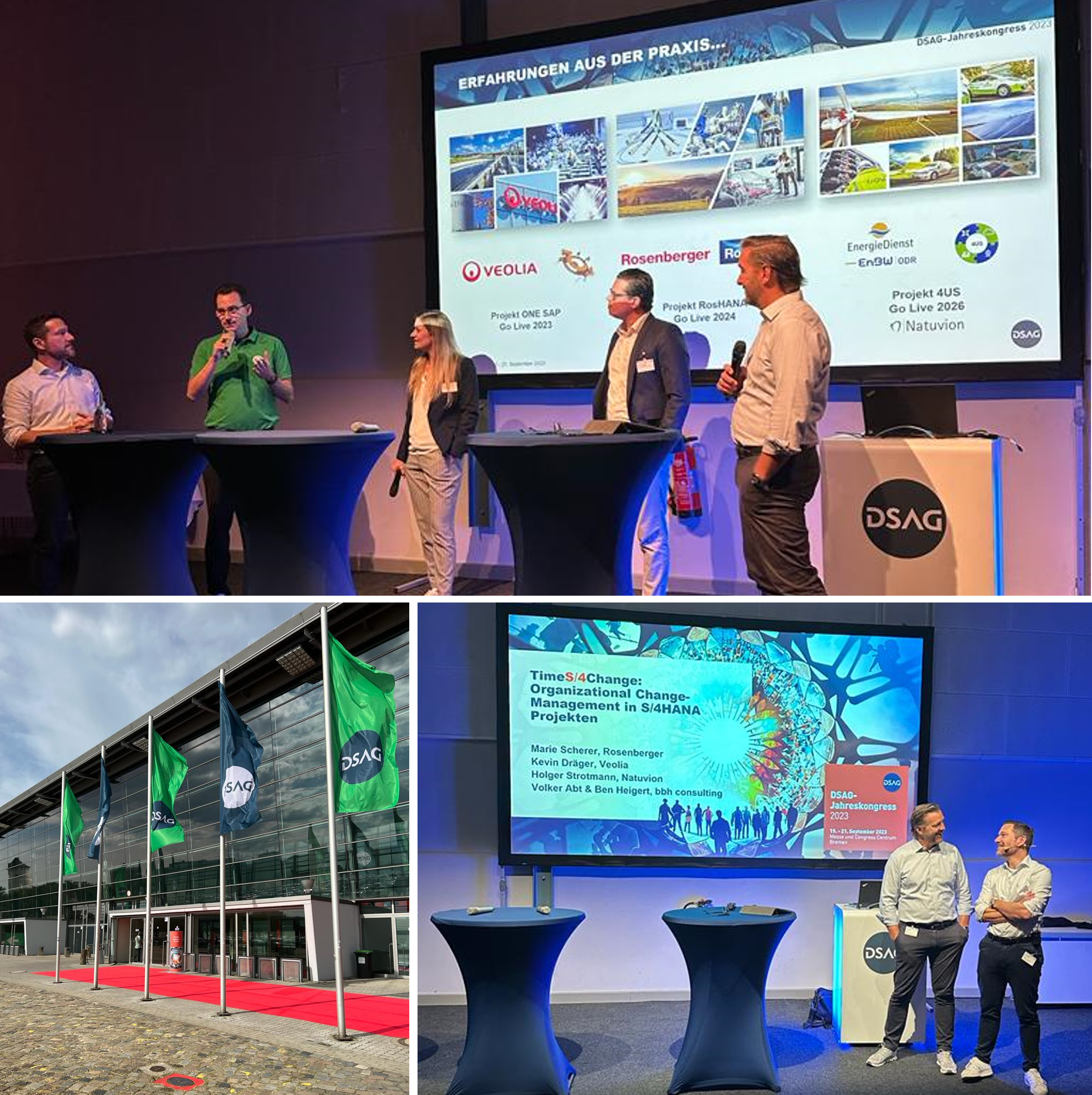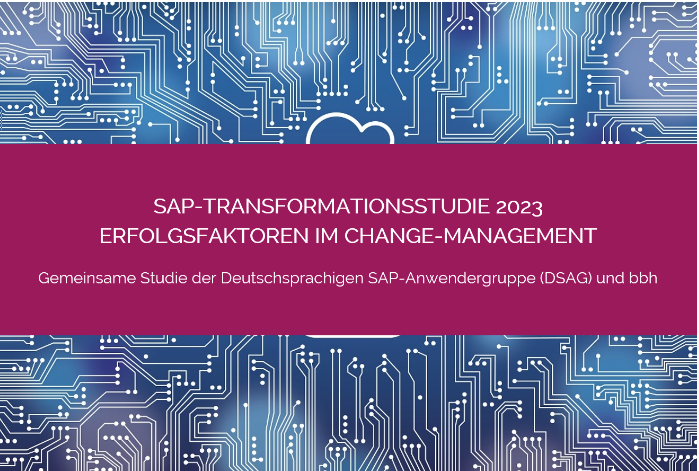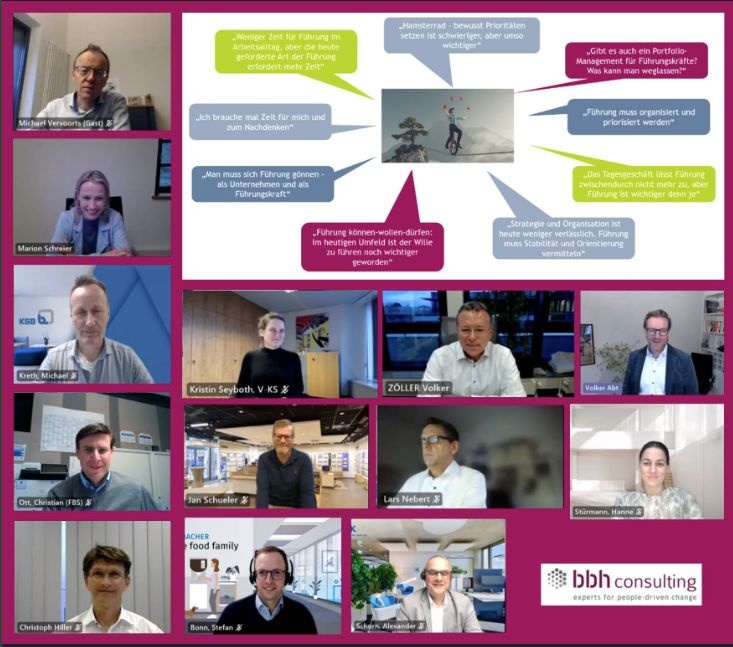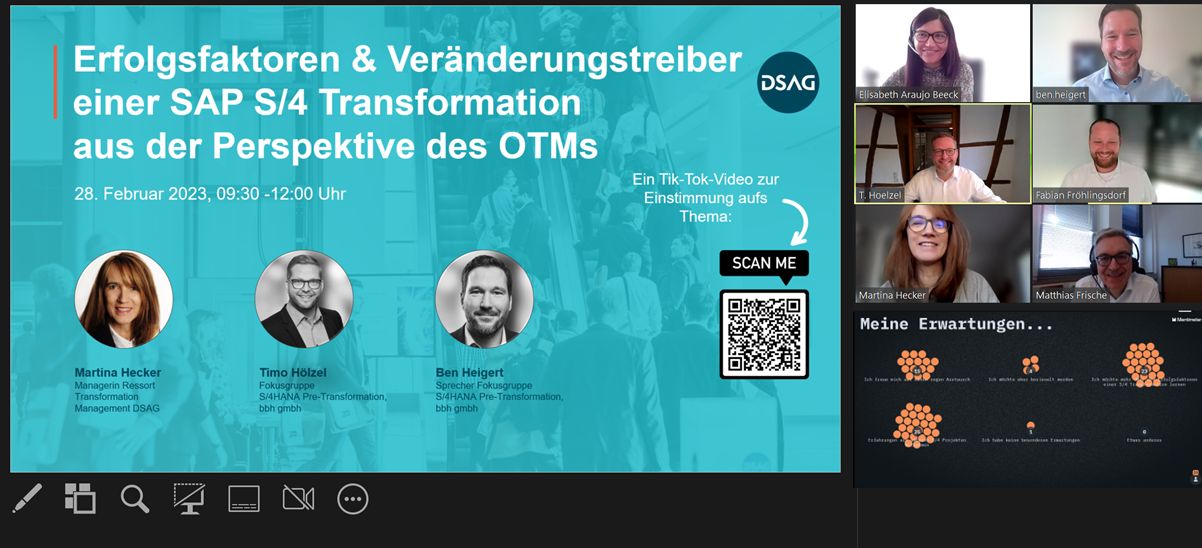People change in IT transformations
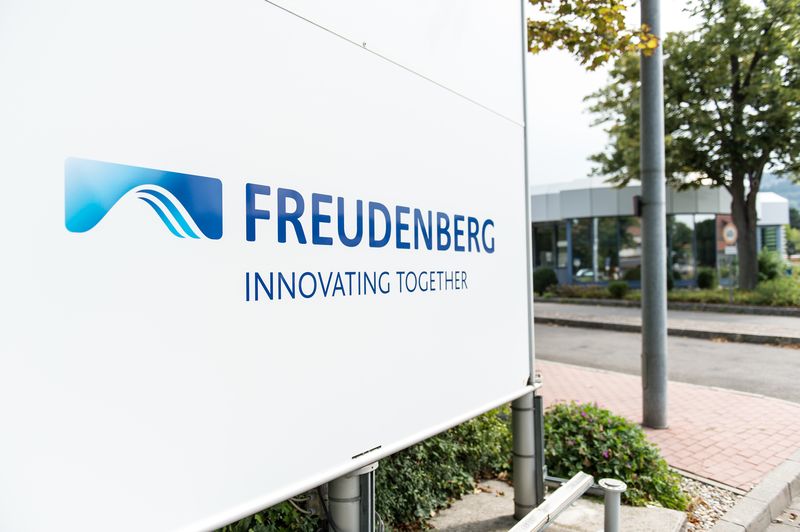
What do digitization projects of a global technology group have to do with organizational development? Many companies have already made their experiences with major IT transformations. Whether it is a question of merging systems, introducing a new ERP system or updating to a new release – such projects usually do not run as smoothly as desired.
Neither the system nor the technical solution is the problem. On the contrary – the new IT landscape often brings significant productivity gains and creates the opportunity to further digitize, standardize and harmonize business processes. So why are such projects considered as „difficult“ or „negative“?
Starting Point: Supporting People Change at the Data Migration to SAP S4/HANA
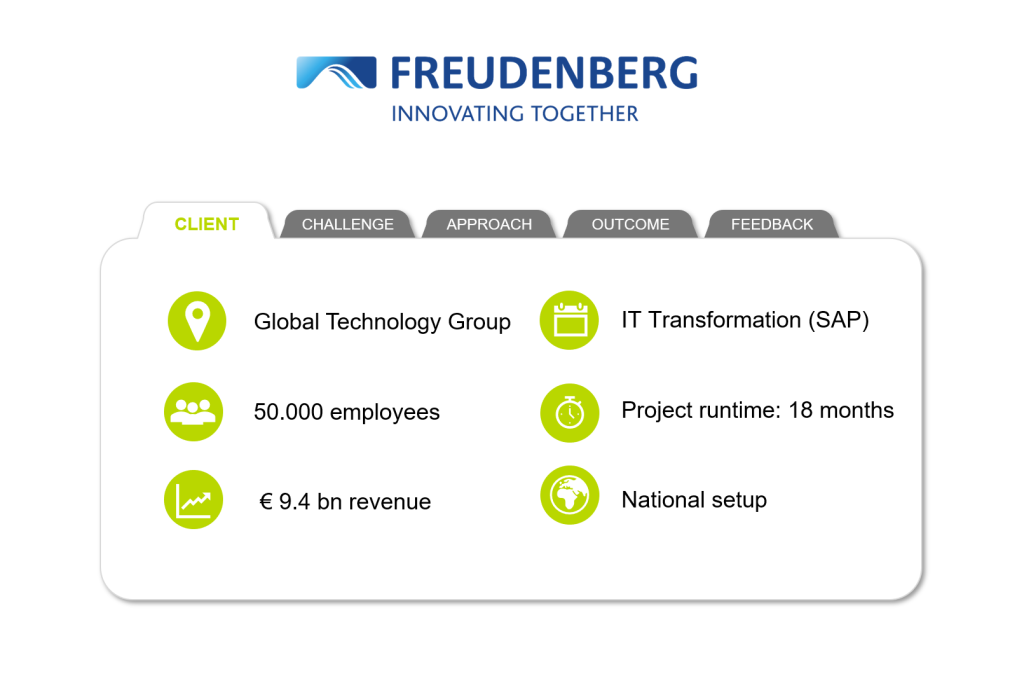
The IT transformation project (introduction of SAP S/4 HANA) at the headquarters of our client Freudenberg in Weinheim has also shown that the focus of IT transformations is not exclusively on system and process change. More so, people change should not be neglected or even completely forgotten. At Freudenberg, it was important that the users and employees were bought in and involved properly and that the change was driven forward with a positive mindset.
From the beginning, the attitude „extensive training on the new system was sufficient“ has been avoided. This is of course of no alternative and a crucial factor – but only by offering training courses in which the „click“ sequence for triggering a process or an order is shown, there will be no changes made in the mind or in action. The employees must understand the meaning behind the changed systems and processes, be able to transfer the new processes and digital technologies to their own daily work and then actually apply them.
Project Approach: Communication, Participation & Change Management
BBH’s roles were clearly aligned with the phases of the project. In the beginning, it was mainly about accompanying the project team, supporting the workstreams and anchoring them as a business project and not as a pure IT project. Based on the technical and process-related innovations, organizational changes were identified, new roles and responsibilities together with the managers developed and subsequently implemented by involving the employees.
In the further course of the project and closer to the Go Live date, the focus shifted onto the users and towards the question of how the acceptance of the new system and project landscape can be continuously increased.
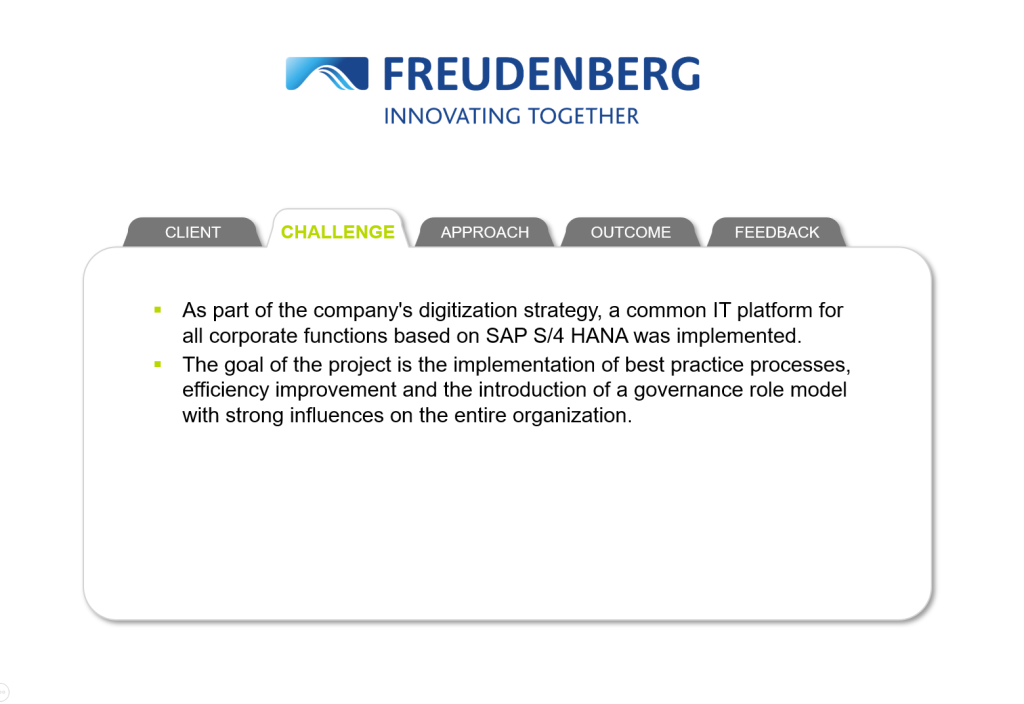
Results of the Change Management by BBH
We at BBH have specialized in closing exactly this gap within the framework of IT transformations. With CO/MM/A (Corporate Mood & Mind Approach), we have developed an innovative approach that we applied to Freudenberg for the first time. This allowed the involvement of all affected employees before, during and after the actual transformation, to keep them informed about the current status, goals and further procedures in the project as required, and to obtain their direct input.
At the same time, we used employee feedback to continuously measure the project progress, with which we have proactively aligned the communication measures. In addition, the always transparent view of the situation in the company was used to investigate anomalies – such as resistance in certain areas or knowledge deficits about the project in a function group – in a more targeted and timely manner.
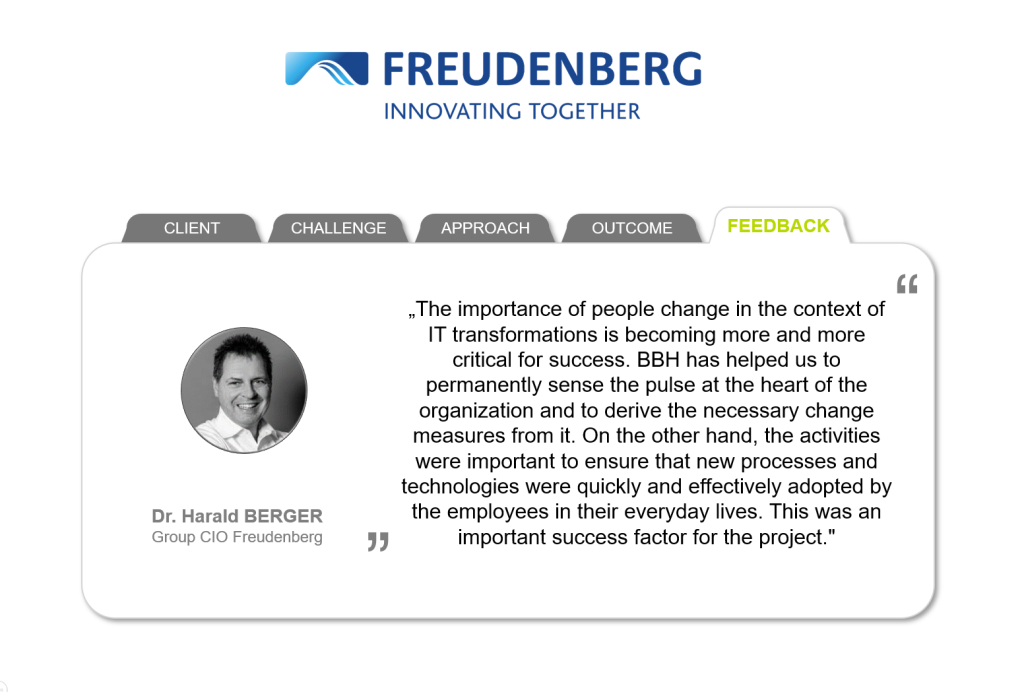
All in all, we have succeeded in creating a positive and constructive atmosphere for the IT transformation and in significantly increasing the speed of change and the success of the implementation.


